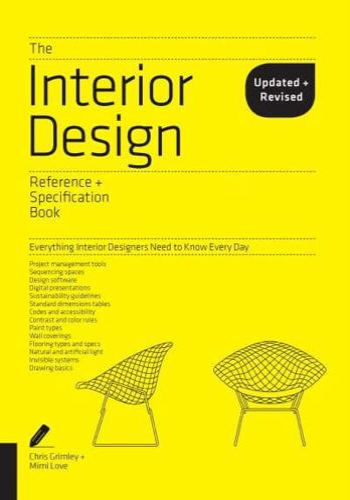This updated and revised edition of The Interior Design Reference & Specification Book gives you the information essential to planning and executing interior projects of all shapes and sizes in a format that is as easy to use as it is to carry-now including interviews with top practitioners from across the field of interior design.
With detailed charts, specifications, diagrams, and digital information for planning and executing projects of every scale, this accessible reference explores these vital design topics:
- Fundamentals: Provides a step-by-step overview of an interior project, describing the scope of professional services, the project schedule, and the design and presentation tools used by designers.
- Space: Examines ways of composing rooms as spatial environments while speaking to functional and life-safety concerns.
- Surface: Identifies options in color, material, texture, and pattern, while addressing maintenance and performance issues.
- Environments: Looks at aspects of interior design that help create a specific mood or character, such as natural and artificial lighting, sound, and smell.
- Elements: Describes the selection and specification of furniture and fixtures, as well as other components essential to an interior environment, such as artwork and accessories.
- Resources: Gathers a wealth of useful data, from sustainability guidelines to online sources for interiors-related research.
The Interior Design Reference & Specification Book is an essential sourcebook for designers, students of design, and anyone undertaking an interior design project.
The Reference & Specification Book series from Rockport Publishers offers students and practicing professionals in a range of creative industries must-have information in their area of specialty in an up-to-date, concise handbook.







